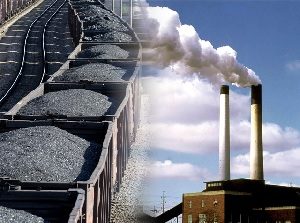 Imagine a world where “clean coal” was no longer rhetoric – a world where coal was not just low emission, but no emission. This seemingly far-fetched idea is to many, nothing more than science fiction. However, researchers at the Ohio State University in Columbus, Ohio may be about to change that perception.
Imagine a world where “clean coal” was no longer rhetoric – a world where coal was not just low emission, but no emission. This seemingly far-fetched idea is to many, nothing more than science fiction. However, researchers at the Ohio State University in Columbus, Ohio may be about to change that perception.
Through a process called chemical looping, researchers believe they have found a way to use coal without generating significant amounts of carbon dioxide (CO2). According to Dr. Liang-Shih Fan, distinguished university professor in Chemical and Biomolecular Engineering, he and his team have been able to use a process called coal-direct chemical looping to burn coal without emitting pollution.
Chemical looping burns fossil fuels and biomass in pressurized reactors without oxygen in the air. Metal oxide in the reactor provides oxygen for the combustion, which then “loops” the gases through different chambers, producing heat. At a basic level, the method burns oxygen, while holding onto carbon, and the heat generated during the combustion enables steam turbines to generate electricity. The process is capable of converting fuels into energy or other chemical products, while emitting less than one percent of the CO2 the fuels would otherwise produce.
Previous iterations of “clean coal” came with the promise of carbon capture only after combustion. This traditional carbon capture and sequestration (CCS) attempts to store CO2 that would otherwise be emitted through the combustion process. Dr. Fan demonstrates a totally new version of clean coal that simply does not produce CO2 in the first place. His process eliminates the costs associated with regulating, monitoring, and cleaning up after energy production by making the process itself cleaner.
The revolutionary carbon capture during the combustion process could have huge implications for the environment, energy efficiency, and economic activity. By capturing over 99 percent of the CO2 normally produced as coal is burned, the chemical looping process emits virtually no pollutants into the atmosphere, while recycling any byproducts of the reaction into other uses.
Rather than losing the CO2 as emissions or burying it in the ground after scrubbing down a power plant, this process can convert it into new products. A value-added process increases the financial and energy potential of resources while diminishing the environmental costs.
Source: “Could Clean Coal Actually Become A Reality?”, Forbes
